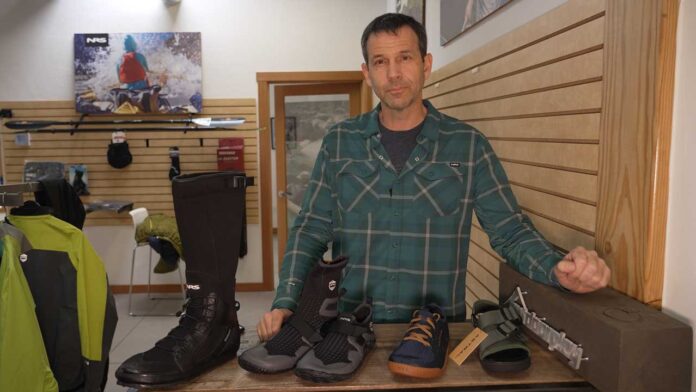Footwear is often one of the last pieces of gear that both new and experienced kayakers consider. There are lots of other pieces of gear to be worried about, like the kayak itself, paddles, clothing, etc. You've got a plethora of choices to make and footwear can be a bit of an afterthought. But, having the right footwear can have a huge impact on your kayaking experience, both in terms of comfort and safety.
How do you know which footwear to wear for kayaking or canoeing? Read on to learn about what footwear is currently on there on the market, as well as which footwear is the most practical for your specific needs.
Kayak Boots or Kayaking Shoes, How to Pick
There are a few different factors that dictate which footwear you should be wearing.
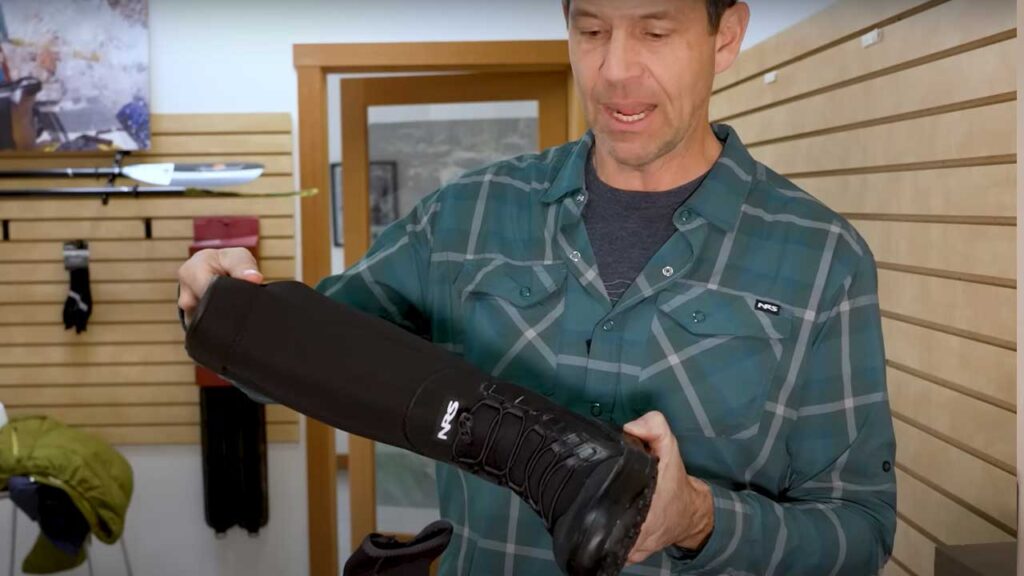
Warmth of Kayak Boots
If you are dealing with cold air or water, and keeping your feet warm is a challenge, then you really need to be looking at neoprene-style shoes or boots. Neoprene is very warm, insulating, and waterproof.
If you are kayaking in warm conditions, then you need a kayaking shoe that keeps your feet cool but will protect them. That is where a water shoe, or closed-toe sandal, really comes in handy.
I would advise against a traditional, open-toe sandal for kayaking, because sand, rocks, pebbles, or anything else can just enter your shoe from almost any angle. That just makes it uncomfortable. When walking in the current, these sandals may slip off in the water, which can be dangerous. The only exception to this is the Astral PFD sandal which uses PFD straps to let you really cinch the shoe onto your foot.
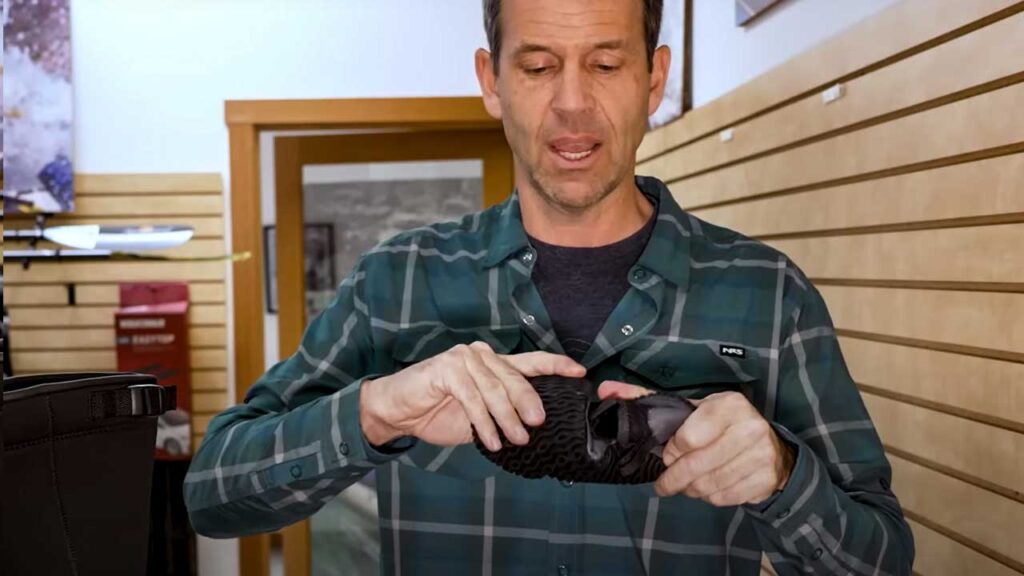
The Soles of the Kayaking Shoe
When we talk about the soles of any type of footwear, the question really is flexibility versus protection. If you are doing a lot of walking and portaging, you want a sole that provides a lot of protection. On the other hand, when you are mostly sitting in a kayak or a canoe you want a sole that offers flexibility.
Flexibility in the sole of the shoe allows the shoe to bend into the position you want it in when sitting in a kayak. That makes it more comfortable. A stiff sole requires your ankle to conform to the shape of the boat, rather than the shoe, making it more uncomfortable and sometimes even painful.
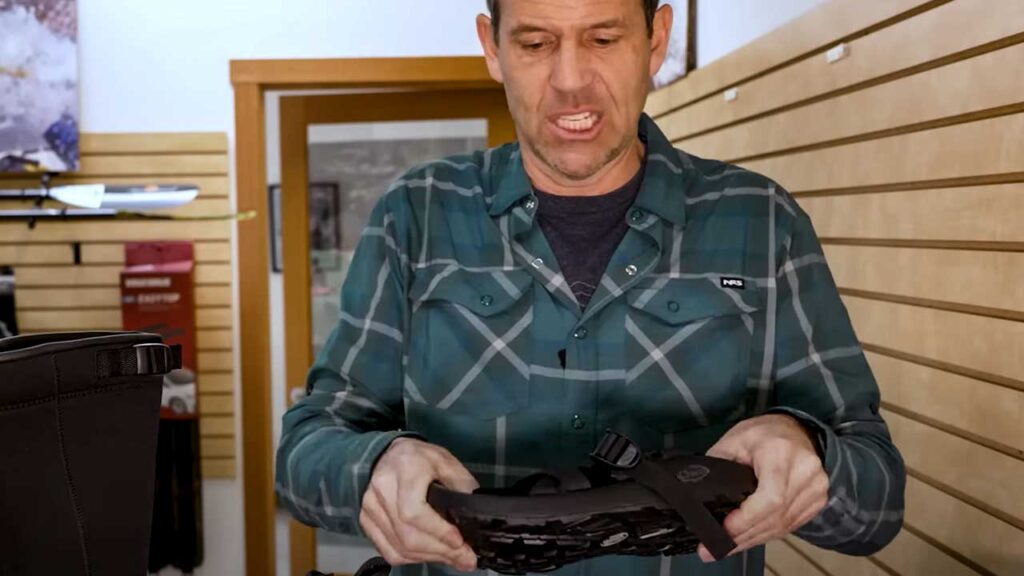
That's one of the main reasons that hiking boots and trail shoes aren’t as good for kayaking or canoeing. These shoes are designed to provide a great footprint on the ground and support your foot to stop it from rolling. But when you are in a kayak or a canoe you want the sole to be able to twist and conform to the shape of the boat.
The bottom line is that flexibility in the sole is really nice for paddling. The amount of protection required on the bottom of the sole really depends on the amount of walking, portaging, and the terrain you will be using the footwear on.
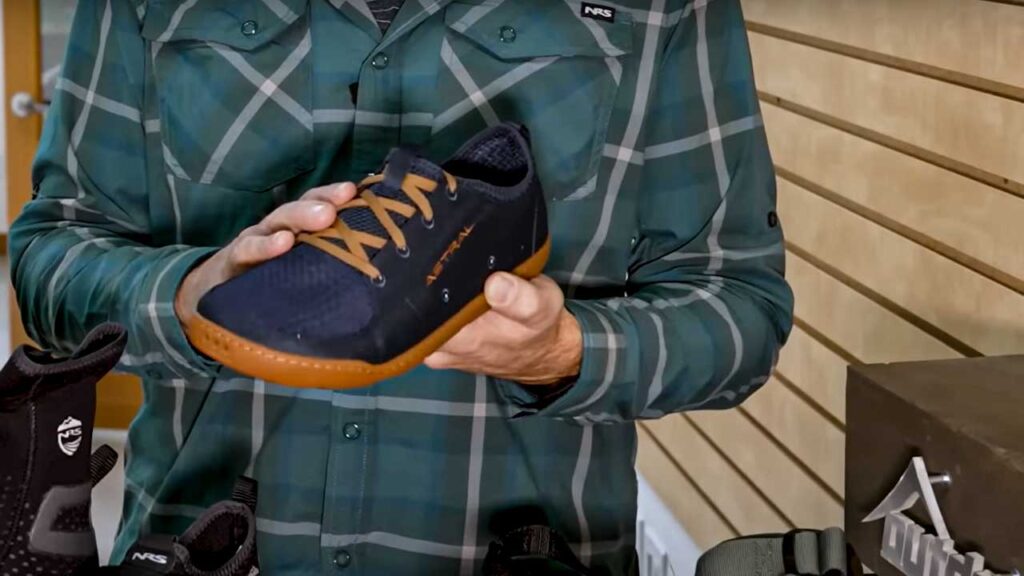
The Fit of the Kayaking Shoes
Obviously, when we talk about fit, you need footwear that will correctly fit your foot. But more importantly than that, will that footwear stay on your foot when you are swimming? Or when you are walking through walking or current? Not all footwear will stay on your feet well when swimming or walking through water.
This is where sandals are notoriously bad. They almost act like flippers on your feet when in the water, and can easily come off. Water shoes and neoprene boots are definitely the best choice here, but make sure they fit properly to your foot.
Drying Speed of the Kayaking Shoes
Different types of footwear will dry at different speeds. Drying speed is not the most important factor to consider when buying footwear, because at the end of the day, as a paddler, you just have to accept the fact that at times your footwear will be damp, nasty, and a little bit smelly. There are things you can do to limit the stink factor – but that is a blog post for another day!
My Top Choices for Kayak Boots and Kayaking Shoes
After many, many years of paddling, I have some consistent footwear favorites. I use three types of footwear for 99% of my paddling.
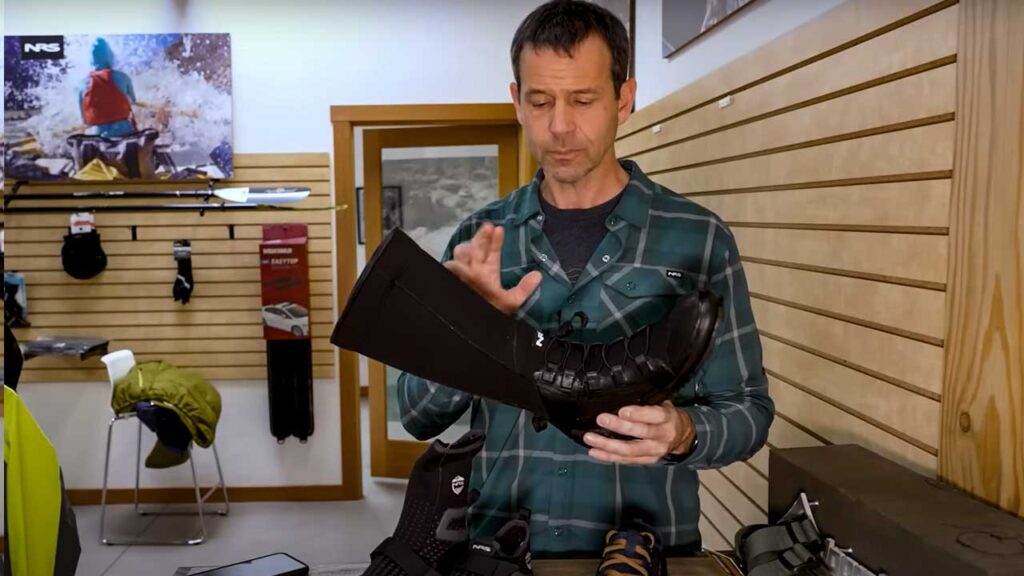
The NRS Boundry Kayak Boot
I have taken this boot on a number of big adventures, from a 21-day trip in cold conditions down the Grand Canyon to a 14-day canoe trip on the George River that basically dumps into the Arctic. This is my cold-weather, expedition boot. It is incredible for canoeing, sea kayaking, rafting, and really any type of paddlesport where you are dealing with cold water.
This boot is waterproof. It is not really a wet shoe. It does insulate when it is wet as it is neoprene, but it is also waterproof unless the water comes over the sides where your leg is. So unless you are walking in deepish water your feet will stay dry. For extra protection and warmth, you can add a neoprene sock inside of the boot.
But this boot is not for everything. It can be simply too warm for everyday use.
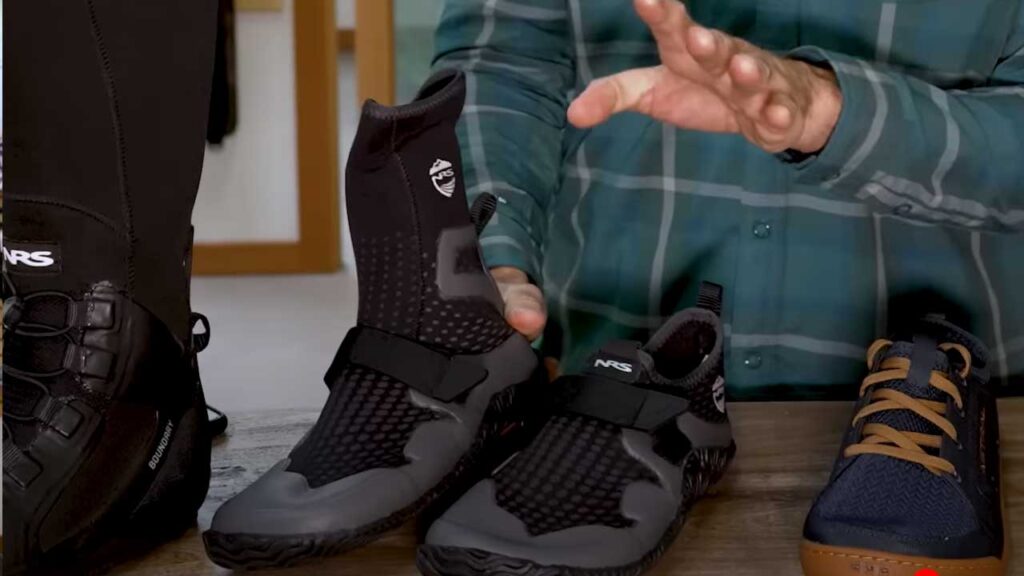
The NRS Kicker & The NRS Paddle Wetshoe
These are more typical kayaking boots. They do not keep your feet dry, your feet will be wet, but they insulate so will be wet and warm. These are my go-to for white water paddling, sea kayaking, and kayaking when the conditions are cooler.
The big difference between these two models is that one goes above the ankle and the other cuts below it. I will go with the NRS Kicker if I don’t need the extra ankle protection or warmth, and I’ll go with the NRS Paddle Wetshoe if I do. I’ve been using these boots for about a decade.

Astral Loyak
This is something I have really gotten into over the past five years. They are great all-purpose water shoes for warmer conditions.
Kayaking Shoes vs Kayak Boots
I have already mentioned this but will say it again, open toe sandals suck as water shoes. Running shoes, something many people who are new to kayaking use, are fine but do have real drawbacks. They are not designed for kayaking and will end up tweaking your ankles because the soles are just not flexible enough.
Last but definitely not least, flip-flops. I love flip-flops, but they suck for paddling. Do yourself a favor and leave the flip-flops in the car when you go paddling. They provide little to no support, have little traction on wet rocks, and have caused me many a twisted ankle when trying to walk in flip-flops on wet, rocky terrain. What’s more, if you go for a swim, you are going to lose your flip-flops.
So stick with footwear designed for kayaking and canoeing, and have a blast next time you are out on the water!

Footwear: NRS Boundry Boot, NRS Kicker, NRS Paddle Wetshoe, Astral Loyak
Shirt: NRS Silkweight Long-Sleeve Shirt



